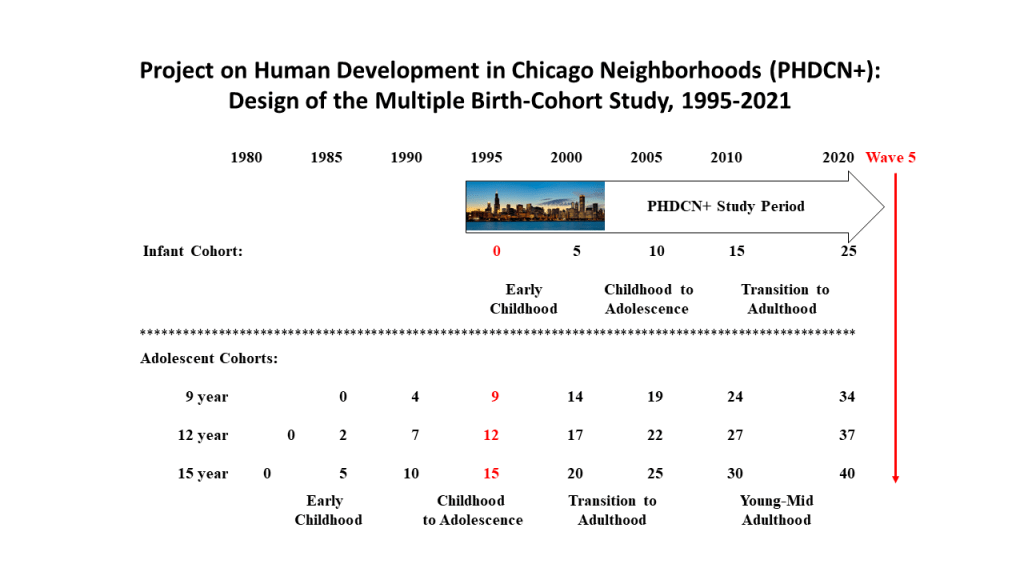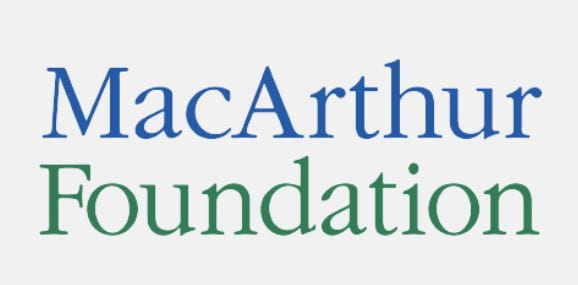Purpose
The Project on Human Development in Chicago Neighborhoods (PHDCN) began in the mid-1990s as an interdisciplinary effort to unite the longitudinal study of individual lives with social context, especially neighborhoods, families, peers, schools, and the criminal justice system.
History
The PHDCN stemmed from a partnership with the John D. and Catherine T. MacArthur Foundation and the National Institute of Justice (NIJ). Originally, over 6,200 children from seven birth cohorts (groups of individuals born around 1995, 1992, 1989, 1986, 1983, 1980 and 1978) were enrolled in the study.
These groups of children were meant to be representative of the diverse children in Chicago, and the country, at the time.
These children, and their parents, were interviewed over three waves of data collection, from 1995-2002. The focus of interviews and evaluations of children and their families focus on the social, economic, organizational, political, and cultural environments in which crime and development take place.
In addition, systematic social observations of the neighborhoods where the PHDCN cohort members lived were also collected.
In 2012-2013, a fourth round of data collection was funded by the MacArthur Foundation. This survey wave focused on a random subsample of four of the original PHDCN cohorts. These four cohorts were selected to maximize variation in life course experiences and exposure to social change at different ages.
In 2021, a fifth survey wave was funded by the National Collaborative on Gun Violence Research (NCGVR), again following up with the random subsample from Wave 4.
Study Design
The design of the PHDCN at baseline involved a two-stage procedure.
First, a stratified representative sample of 80 neighborhood clusters was selected in the mid-1990s (out of 343 total), representing the wide variability, especially by race and class, of Chicago neighborhoods. A detailed array of data was collected from each neighborhood, including independent surveys of residents across the entire city of Chicago (N = 8,872) and systematic observations of tens of thousands of city streets in the 80 sampled neighborhood clusters.
Second, for the main longitudinal study a representative sample of eligible children was drawn from a screening of more than 35,000 households in the 80 neighborhoods. Children falling within seven age cohorts at the time—infancy (born late 1994-1996), and then every three years until age 18 (i.e., age 3, 6, 9, 12, 15, and 18)—were then sampled from randomly selected households and studied over about six years, to the early 2000s.
In 2011, a random sample of participants from the original 0, 9, 12 and 15 year old cohorts was selected for follow up. This sample was interviewed between 2012-2013 (n=1,057) and survey again in 2021 (n=682).




